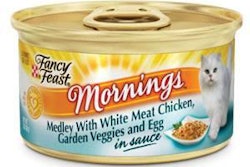If you hear anyone still expressing doubt that today's economy is global, just point them to all the recent news about the price of corn, soybeans and other commodities. As recently as early to mid June, the US Department of Agriculture and others were crowing about the record US corn crop expected this year, potentially 9% larger than the 2011 crop, which itself set a record.
Then Mother Nature struck, delivering devastating heat and drought to the US Midwest and destroying a significant portion of not only corn plantings but also, to a lesser extent, soybean and other crops. US secretary of agriculture Tom Vilsack said recently that 78% of the US corn crop was in drought-impacted areas (other estimates say 88%), and 77% of the soybean crop was also under threat.
In the wake of that natural phenomenon, US corn prices have soared nearly 50% in just three months' time, according to a CNNMoney article by Catherine Tymkiw, while soybean prices are up 25% since early June. USDA projects prices for beef and veal to increase 3.5% to 4.5% as farmers cull their cattle herds, rather than pay ever-rising costs for feed. According to USDA economist Richard Volpe, poultry prices will be affected first, with the same gains (3.5% to 4.5%) for chicken and turkey.
So, even if your petfood formulations do not include corn or soy products, you can expect to pay more for ingredients if your protein sources include beef, veal, chicken or turkey. While pork is not commonly used in petfood, it does not offer a great alternative, at least not from US sources, because USDA says pork production decreased 4% in June.
This is true even if you source meat protein or other ingredients from other parts of the world because, again, we're in a global economy. Case in point: With US corn prices rising so high and so fast, buyers of corn in the US are actually seeking to import corn from Brazil, according to news on WattAgNet.com. "According to port records, 2008 was the last year foreign bulk corn arrived on the US mainland, and it was in the form of seeds," the article says. "Traders say meat companies along the US east coast can purchase Brazilian corn at a US$12-per-metric-ton discount to US corn. Chicago corn futures reached a record US$8.24 per bushel on July 20, or US$324 per metric ton."
In addition, corn growers in Argentina are asking their government to lift an export cap so they can take advantage of the rising global demand in the wake of the severe drop in the US crop. The growers say they can boost output by up to 60% and reach 31 million metric tons if the current 15 million ton cap is lifted.
Meanwhile, ever-enterprising China has animal feed producers wanting to sell back corn previously purchased from the US, when prices were below US$6 per bushel, to take advantage of the now record-high prices, according to Reuters. (In case you needed further proof that China is always seeking to become an even bigger player in the global economy.)
This mad scramble on the world stage to find (or sell) ingredients at manageable prices lends even more credence to the concern of some petfood experts about the scarcity of ingredients, especially ones currently used to feed humans, food production animals and pets. There are no easy answers to this problem, but is it incumbent on our industry to at least help search for solutions?
















